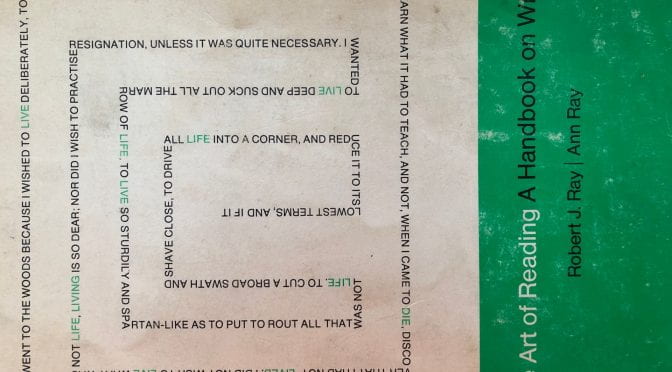I repurposed last month’s research paper by using it to create a Prezi video. My research paper’s audience was made up of English teachers, but my Prezi video’s audience is made up of my students’ parents. I’m using this video this coming fall for our back-to-school activities (though I plan on revising the video before then). (For about a minute of this video, the audio and video are out of sync. Sorry about that.)
I chose a Prezi Video because I wanted to show my face to my students’ parents. I like the idea of bullets and photographs flying in and out that support the points I make with my talk. This is important because my audience lives in a high-tech community, and I wanted my communication to imply that the course will cover the genres and occasions that my students may face in a more high-tech life.
When I wrote the script for the Prezi video, I left out most of the first three pages of my research paper, which mostly focus on the history of composition instruction as it pertains to correcting grammar, usage, and spelling on student work. I thought that I had no basis for thinking that my audience would be interested in that information since they were more interested in their teen’s teacher’s approach to their teen’s writing than to the historical factors that may have influenced it.
I also introduce myself and get to the point of my Prezi video in my script’s second sentence: “ The guy who’s supposed to spill all of that red ink all over your teen’s papers? But I don’t spill so much of it anymore. Instead, I’m learning how to be a closer reader of my students’ writing.” By contrast, my research paper contains no introduction of myself because of a convention in research paper writing. And my research paper has an evolving thesis, starting with an initial thesis — a “they say” — concerning the importance of giving “red ink” feedback.
One thing in both communications is evidence that grammar instruction, when it is divorced from rhetorical writing instruction, is futile. In the research paper, I give more quotes from authoritative works, and I give anecdotal evidence from “English teacher workrooms” of English teachers who complain about their students’ failure to apply their grammar knowledge to their writing. To put all of my research into my Prezi video would seem like overkill. To put the English teacher workroom generalization in a communication for parents, however, would seem unprofessional.


